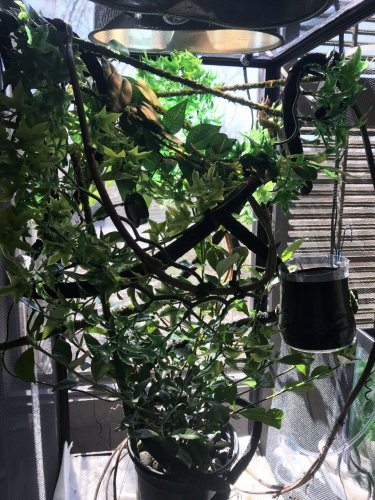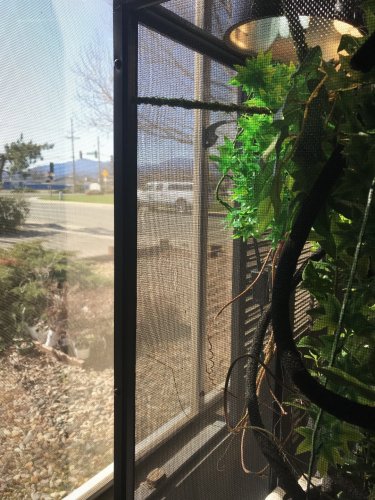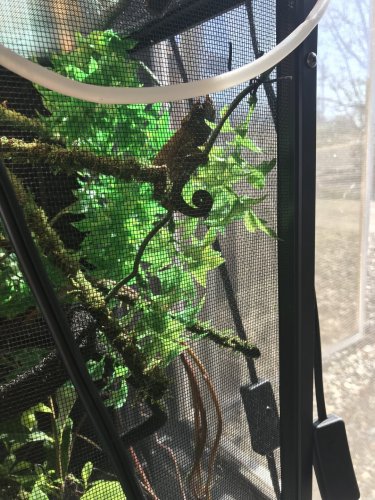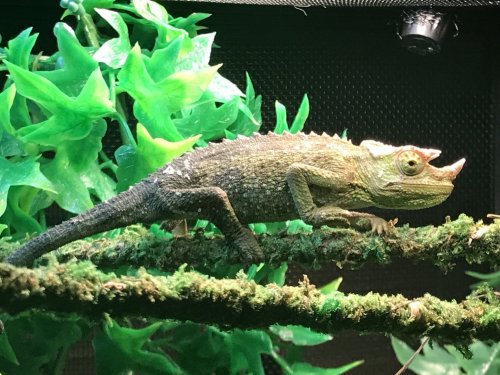PBandJammers
Member
Chameleon Info:
Cage Info:
Current Problem - Him opening his mouth started about 2-3 days ago. Which is also the time I started feeding him the new crickets from a different place. I don’t see why that would be the cause though. He doesn’t gasp or hiss or anything like that, he’ll just occasionally open his mouth for like 2-3 seconds then close it again. I’ve read that open mouths is either it being too hot and a respiratory infection. I don’t think my temps are too hot. I’m just a worried parent. He’s been eating and drinking and dedicating just fine. I uploaded some photos of what his cage looks like, as well as window placement.
#1
- Your Chameleon - Male, Jackson's, I’m sure he’s between 3 - 6 months
- Handling - Very little. Nothing besides moving him to a plant by the window to free roam.
- Feeding - About 4-7 Crickets daily
- Supplements - Calcium without D3. I was told by the reptile shop I purchase my crickets through they are vitabugs and my Chameleon won’t require vitamin supplements
- Watering - The Reptirain automated system. I have it set up for 1 minute every 3 hours.
- Fecal Description - Its been daily and dark brown and white.
- History - Had him about 3 weeks now.
Cage Info:
- Cage Type - I have a screen cage 16x16x20
- Lighting - I have the Zoo med double dish thing for lighting and I'm using a UVB as well as basking light in it. it's set from 8am to 8pm on a timer.
- Temperature - In basking spot it hits High 70’s and the rest of the cage is in the high 60’s.
- Humidity - The digital humidity gauge I have hanging has a read out of around 70%- 100% depending on when the last spray was.
- Plants - Mostly artificial with a real Gardenia.
- Placement - It's in the corner of my living room next to a window with woodenblinds. On nice days I’ll open the window and let air and light in. it's not near any vents or anything. the top of the cage is about 6 1/2 from the ground as it's sittingon a desk.
- Location - I'm in northern California
Current Problem - Him opening his mouth started about 2-3 days ago. Which is also the time I started feeding him the new crickets from a different place. I don’t see why that would be the cause though. He doesn’t gasp or hiss or anything like that, he’ll just occasionally open his mouth for like 2-3 seconds then close it again. I’ve read that open mouths is either it being too hot and a respiratory infection. I don’t think my temps are too hot. I’m just a worried parent. He’s been eating and drinking and dedicating just fine. I uploaded some photos of what his cage looks like, as well as window placement.
#1









